16 Best Violin Bows in 2024: Ultimate Buying Guide for the Right Violin Bow
Buying the best violin bow is at least as important as the violin you buy
If you have a fantastic violin, but your bow is wobbly, the hair doesn’t respond to the string and it never seems to do what you want, you will be discouraged in your violin playing.
For example you could notice the violin bow jumps or shakes when you want to play legato or just doesn’t want to jump when you want to play spiccato. Also you might have the idea that your violin doesn’t sound that good with the bow that you have.
The violin bow makes an enormous difference in the sound you make, how you tackle fast runs, the bowing techniques you can perform and the overall ease of playing violin
Violin bows cost from $ 6 (see review here) up to $ 288,960 (more info below). In this article I will discuss what to look for when buying a violin, how much a violin bow costs and my reviews of beginner, intermediate and professional bows of different prices.
Table of contents:
Top 3 violin bows in 2024
Let’s start with what I think are the best violin bows for beginner, intermediate and advanced players. Then I will discuss what difference a bow makes and what to look for when buying a bow. After that I will continue with the promised 16 best violin bows on the market right now and more depth violin bow reviews.
Best violin bow for a beginner violinist
Do you feel the violin bow that ‘came with’ your violin set just doesn’t seem to do what you want? Do you want to sound better, tackle fast runs and perform different bow strokes?
A good violin bow doesn’t have to be expensive. While good pernambuco wooden bows start around $ 600, these days carbon fiber bows make it possible to get a good violin bow at a very low price.
I think this bow is the best under $ 100:
Fiddlerman carbon fiber violin bow
Best all-round violin bow for intermediate to advanced players
As an intermediate player you want a bow that not makes your violin sound great, but also can perform all different violin bowing techniques.
CodaBow Marquise GS violin bow
This bow gives a warm, but full sound on almost every violin. It feels like it follows your hand beautifully and subtly. The stick is round and a little flexible making it easier to switch between detaché and spiccato. Still it’s stiff and punchy enough for a crispy staccato or ricochet.
Top violin bow for an advanced or professional player
In the price range for advanced and professional players (say from around $ 3,000 for a violin) one often speaks more of individual bow makers of the past and present more than brands and types. It’s important to select a unique bow that suits your playing style and violin.
Arcus S9 round violin bow
This bow has an extremely light weight (49 grams), which makes it very agile and light and easy to play with. Switching between all different bowing techniques is a breeze. It allows the maximum resonance from your instrument and you’ll have a large brilliant sound without it being too harsh.
What difference does a violin bow make in your playing?
You might be wondering: Does a violin bow make a difference? It looks like a simple stick with some hair, right? Why do violinist pay thousands for a special bow?
Certainly as you’ll learn different violin bowing techniques, a good violin bow will make it a lot easier to perform a smooth detaché or legato, a jumpy spiccato or ricochet and a crispy staccato.
A good violin bow will help you make a beautiful sound on your violin, make it easier to play difficult pieces and give you a lot more confidence in your violin playing.
Professionals will agree that they’d rather play a mediocre violin with a top range bow than the other way around.
‘Le violon, c’est l’archet.’
(the violin, it’s the bow) said the famous bow maker François Tourte around 1800. Most bows are still made after the design he developed.
To show an extreme difference between violin bows, check out this video review I made with a $ 29 bow vs a $ 8,000 bow.
Sure, Zlata, now we know the violin bow is extremely important for your violin playing, but…
What to look for when buying a violin bow?
How are different violin bows different?
Before I go into the reviews of violin bows, let’s discuss what differences you can notice between violin bows. When you are choosing a violin bow to buy, there are several characteristics to look out for.
#1 How the violin bow makes your violin sound
When you play with different violin bows, you’ll start to notice that your violin produces a different sound depending on the bow you use. Some bows will make it sound warmer, mellower and softer, while other bows will make your violin sound more brilliant, louder or even shrill.
It’s important to consider where you will use the bow for. Are you a soloist who needs to carry the sound over the orchestra in a large concert hall? Or are you second violinist who wants her sound to blend in the orchestra? Maybe you mainly play chamber music.
‘Response’
Response might seem like a vague term that’s hard to imagine if you haven’t experienced differences in it yourself when trying out different bows. In essence it means how the violin bow reacts when you start a note. Is the sound there right away? Or do you very consciously need to start the sound? Or do you feel the sound starts delayed? It’s pleasant when the sound starts right away as you make the bow stroke.
Dynamic range
When you’re testing a violin bow try out playing pianissimo in all places of the bow (for example also at the extreme tip) and playing fortissimo. You’ll discover that some bows can play very very soft and still have sound, while other bows seem to respond less and have a smaller dynamic range. To play the violin expressively, it’s important that you can play all dynamics easily with your bow.
#2 How it feels to play with a violin bow
When you start trying out different violin bows in your quest to buy the right one, you’ll quickly notice the bows feel differently while playing.
Weight (light vs heavy)
Some bows are extremely light like the Arcus bows of 49 grams. Other bows feel quite heavy, some even over 60 grams. This might not seem like lot, but you DO feel it a lot when playing.
Balance (stable vs bouncy)
A violin bow could be heavier at the tip or heavier at the frog.
Pros and cons of a heavy violin bow
When the bow is heavy at the tip it feels very secure, you can easily do a smooth legato, but jumping bowing techniques might take more effort and might seem more difficult. Also your pinky needs to do more work.
Pros and cons of a light violin bow
When the bow is relatively heavy at the frog OR particularly light at the tip (or both) the bow can feel a bit more nervous and jumps easily. This is an advantage for jumping bowing techniques like spiccato, sautillé and ricochet, but it can make smooth bowing more difficult. If the bow is too nervous for you, it feels like you can’t control it. Obviously a light bow is agile and fast runs can be easier. In general with a light bow you feel more ease in your playing and it’s less strenuous for your arm, hand and fingers. In wooden bows a very light weight often means that the bow is soft and can feel wobbly. In carbon fiber bows, like Arcus, it’s possible to make very light bows that are also stiff.
Stiff vs flexible
With a stiff bow it’s easier to put weight into the bow. When you press your index finger into the bow while playing, this pressure (or weight) will transfer through the bow and the bow hair into the string. If you have a soft or flexible bow, you will see that the bow easily bends in the direction of the hair (or even almost touch the hair) when you put pressure on the bow.
The pro of a stiff bow is that you can easily transfer weight, have a good response and play jumping bowing techniques like spiccato and ricochet. However, a stiff bow might also feel a bit nervous and miss a certain nuance. A more flexible bow can feel like you’re more in control and can make more subtle jumps in spiccato and a smoother legato. When a bow is too soft, it doesn’t function and is really hard to manage.
Isn’t the stiff vs flexible a matter of tightening the bow? Yes, when the bow is tighter it will feel a bit stiffer. This is why it’s important that you know exactly how much to tighten your violin bow (watch the video here). However, the stick itself has a certain resilience and even if you tighten a very soft bow a lot, it will still be soft.
#3 Types of violin bows and what they’re made of
Carbon vs Wood violin bow: what is better?
Carbon fiber violin bows are good news for a few reasons:
- It’s possible to make very good bow for very little money as you don’t need rare types of wood
- You can manufacture types of bows (also higher range) that have benefits that wood bows can’t have (like the very light Arcus bows that are still stiff and offer the advantages of both baroque and Tourte bows).
- Carbon fiber violin bows are far less sensitive for wrapping due to humidity and temperature changes. The are more durable.
- Pernambuco is an endangered type of wood, so good quality wooden bows will become more and more expensive in the future.
Some violinists think the cheap carbon composite bows from Chinese factories are what carbon has to offer. However, these days in carbon as well as wood there are so many quality levels and types of bows that one cannot say something general about either of them.
Lots of violinists still like the charm of an individual wooden bow and love their precious pernambuco bow from a certain (maybe antique) bow maker.
Read more about wood vs carbon violin bows in my article right here.
Read here about all the different materials the parts of the violin bow are made of.
Octagonal vs Round violin bow: what is better?
The part of the violin bow at the frog is always octagonal (so the wood has eight edges). The stick of the bow can either be round (smooth) or octagonal. In general octagonal bows are stiffer, more agile and jumpier. Round bows are smoother, more flexible and peaceful.
Violinists play for 50% on round bows and 50% on octagonal bows, which proves that one isn’t better than the other. It’s a matter of personal preference. You can be a ’round bow person’ or an ‘octagonal bow person’ and you can switch during your career.
Please also know that the characteristics of each bow differ a lot and the fact that they are octagonal or round doesn’t say everything. When you’re looking to buy a violin bow, don’t limit yourself to one bow.
Watch this violin bow review video to find out more about round vs octagonal.
Now you know what to look for when buying a violin bow
How much does a good violin bow cost?
There are beginner level bows that cost under $ 100 and are still great bows to start out with. Intermediate bows cost between $ 500 and $ 2,000. Professional level bows start around $ 3,000 and cost up to six figures. I will review some great violin bows in each price range below.
Let’s get started with my bow reviews, so you can pick the right bow for you!
Top 16 Violin Bows of 2023: reviews by a violin teacher
I will review violin bows from cheap to expensive and will start with some bows that are great for beginners and a good ‘bang for your buck’. After that I will continue with bows for intermediate, advanced and professional players.
Selecting and buying the right bow for you is very personal, which is why it’s important to try out different bows for yourself if you have the possibility to. You can do this in a violin shop or have a selection of bows shipped to your home if you’d like to buy your violin bow online. I hope my reviews can help you make your selection.
Best violin bows for beginners
Price range $ 63 to $ 400
What are good violin bows for beginner violinists? Check out these top picks:
P&J Fiberglass violin bow you can rehair yourself!
Price: $ 63
Features: fiberglass stick, easy rehair system you can do yourself at home, Parisian eye, mother of pearl inlay, available in lots of sizes and colors (fun for kids)
So your kid is a budding violinist and one day while playing the bow hair gets caught up in the finetuners of the violin when he’s not looking. Then he tries to get the bow lose himself and SNAP… the bow hairs are broken.
Or you’re an adult, want to take your bow out of the violin case and EECK… the bow hairs get stuck behind the bow holder and break. Noooo!
For bows under $ 100 there’s no point in getting a rehair that can cost the same as your bow except if you get a P&J bow with the easy at home rehair system. Yes, you can rehair this bow yourself!
Of course that’s a big advantage, but also know that this bow is fiberglass (not carbon or carbon fiber) and will not have the sound and characteristics of bows made out of better materials.
However, for schools this bow is ideal!
Fiddlerman carbon fiber violin bow
Price: $ 69
Weight: 60 grams
Features: carbon fiber stick, ebony frog, circle eye, horse hair
This bow is truly the best bang for your buck and the bow I recommend to everyone with a tight budget looking to upgrade from the bow that ‘came with their violin’. The sound is nice and full and it can easily do all the different bow strokes for you. Because it’s carbon fiber, the quality will be consistent and it’s very durable.
Dörfler D7 massaranduba violin bow
Price: $ 109
Features: ebony frog, simple eye and round massaranduba stick
Dörfler makes excellent violin bows in Germany and really is a brand to look for when buying a wooden violin bow. Massaranduba is a municipality in Brazil making this a brazil wooden (but not pernambuco) violin bow.
This bow is nice and stable for a beginner, has a flexible round stick and produces a warm not too full tone. When you’re going into more advanced bowing techniques, you might however want to look for
Holstein pernambuco violin bow
Price: $ 199
Weight: 60 grams
Features: pernambuco stick, silver mounting, ebony frog, Siberian horse hair, mother of pearl inlay
Forget that I said that only above $ 600 you can get a quality pernambuco bow. What!? This Holstein bow is made of quality pernambuco, it has a great response, good open sound on your violin, a strong resilient stick and… it’s under $ 200. On top of that it comes with the great warranty and service of the friendly guys at Fiddlershop. If you want a traditional quality bow with small budget, get this bow!
CodaBow Prodigy Carbon Fiber Violin Bow
Get rid of bow shakes and feel in control as a beginner violinist
Price: $ 365
Weight: 60 grams
Features: graphite fiber weave stick with kevlar fiber acoustic core, nickel silver fittings, ‘Xebony’ frog, Mongolian horse hair
If you want to feel secure as a beginner and stop your shaky bow, get this Prodigy. It feels very stable, is on the stiff and slightly heavy side. It might not be as agile as the more expensive models by CodaBow, but it can be an extremely pleasant bow for the first years. It’s simply very forgiving and I recommend it time after time when beginner(ish) students complain about not being able to control their bow.
Best mid range violin bows for intermediate players
Price range: $ 500 to $ 750
If you’re playing more technically challenging pieces and start to deepen your musical expression, upgrading your bow can be really rewarding as an intermediate violinist.
Over the years I’ve convinced quite some intermediate players who thought they needed a different violin, to look into a new bow first. It can make all the difference.
Fiddlerman Pro Series carbon fiber violin bow
Price: $ 599
Weight: 53 grams
Features: carbon fiber stick, snakewood frog, sterling silver fittings,
The sound of this bow is brilliant, open and clear. It’s nice and light, easy to handle and very agile. You can easily perform all bowing techniques with it and it offers excellent value for money. It’s a great affordable alternative for the more expensive carbon fiber bow brands.
Watch my video review of the Fiddlerman Pro series here and decide for yourself if it’s PRO or NO.
Conrad Götz No.76 Pernambuco Violin Bow
Price: $ 639
Features: round pernambuco stick, Parisian eye, ebony frog, made in Germany
Round bow with a mellow sound that’s comfortable to hold and easy to play. If you’re looking for a great intermediate traditional bow, this is a good pick!
Musing C3 Carbon Fiber Violin Bow
Price: $ 675 (Müsing bows start at $ 495)
Weight: 54 grams
Features: 80% carbon fiber stick, steel fittings, star shaped button and ergonomic frog
Great quality carbon fiber bow that’s 80% carbon fiber, which means it allows great resonance of your violin (too much epoxy mutes the sound). These bows are agile and you can perform different bowing techniques with ease. Also it’s lighter than most wooden bows.
Jean-Paul Pernambuco Silver 2-star Violin Bow
Price: $ 739
Weight: 60-62 grams
Features: carefully selected pernambuco stick, horn frog, large pearl eye
A traditionally crafted pernambuco bow with a beautiful full and warm sound. This bow is made with great attention for details.
Jean-Paul is known to make excellent bows with a peaceful character and a warm sound. Make sure to also check out their carbon fiber bows if you want the advantages of carbon fiber with the look and feel of a traditional pernambuco bow.
Best all-round violin bows for intermediate, advanced and professional players
Price range: $ 1,200 to $ 2,250
Are you looking for a bow that can blend in in an orchestra, help you shine as a soloist, enjoy chamber music, be great at your wedding gig and does all bowing techniques with ease while at the same time make your violin sound best?
These bows can really do everything for the active amateur or the professional with a variety of gigs:
Codabow Marquise GS Violin Bow
Price: $ 1,295
Features: unidirectional carbon fiber stick, natural acoustic core, ‘Xebony’ frog,
This is the top of the line bow by CodaBow and compared to it’s ‘little brothers and sisters’ it’s definitely worth the extra money. It really gives you the smooth subtle feeling from a traditional master bow and it sounds warm, but full, and has a great response.
For example the GX does everything it needs to do, but the Marquise allows for more expressive playing and a more complex tone. I know this all sounds vague, so definitely give it a try.
Michael Mönnig Violin Bow Silver
Price: $ 1,739
Features: very high quality aged round pernambuco stick, silver mounting, Paris eye
This is a great example of a versatile, high quality hand made pernambuco bow. It has a powerful and sonorous sound with a great response. This bow will express all the subtleties in your playing in a beautiful sound.
Arcus T6 Violin Bow
Price: $ 2,250 (for the T6, the T-series starts at $ 1,080)
Weight: 52 grams
Features: unidirectional hollow carbon fiber stick, snakewood frog, silver mounting
The T-models are the most universal bows made by Arcus. It’s also their newest series and since it’s introduction I’ve been recommending them so much to a variety of players. They cover a huge spectrum of sound colors and playing styles. Violinists can expect great warmth and brilliance at the same time, which make them suitable for a majority of instruments.
For this review I chose the T6, because I think the sound and playing quality is noticeably better than the T4 or the T5 and definitely worth the upgrade if you can afford it. Above the 6 it’s a bit more costly, still worth it, but more luxury than necessity for a professional.
Watch my review video of the Arcus T-series right here. In it I also walk you through the different classes (T4 to T9), because I know that can be very confusing if you’re new to Arcus bows.
Most expensive violin bows for professional violinists
Price range: $ 3,799 to $ 288,960 (!)
Get ready to be tempted by these top tier violin bows suitable for the most demanding professional players. Usually when you want to buy a high quality violin bow, the way is to visit a violin shop, try out several bows and perhaps take a selection home. You will find unique bows by bow makers of the past and present. For this article I have selected some professional violin bows that one could buy online.
What is the most expensive violin bow in the world?
Did you know that violin bows can cost up to six figures? Antique bows of famous makers that are in a good state and have a history of being played by famous violin virtuosos like Kreisler or Paganini can be auctioned for very high prices. The most expensive violin bows are made by the famous bow maker François Xavier Tourte (1747 to 1835). Most bows are still made after his design. Recently a silver and ebony bow Tourte made and was played by Bronislaw Huberman is sold for a whopping $ 288,960.
Why are expensive bows gold mounted?
All bows I review below of the higher price range are gold mounted. Are expensive violin bows more expensive because of the gold mounting? Yes and no. It’s a tradition in bow making for a maker to use the most precious materials for their best bows. Gold mounting is to indicate that this a a top level bow. However, of course the maker must calculate the gold price in the violin bow price. Gold is a little lighter than other materials, but it doesn’t really make a difference in the playing characteristics of the bow.
Penzel Violin Bow Goldbow
Price: $ 3,799
Features: top level pernambuco aged 40 years, gold mounting, Parisian eye, Hill liner, sequential numbering of the stick and frog
Traditional violin bow made out of top level pernambuco wood by master bow maker Matthias Penzel in Germany. This is a family business with a tradition going back over 100 years. This is a bow one could for example play in a professional orchestra, but it’s also a gem to have or the demanding amateur.
JonPaul Vetta 14K Gold Violin Bow
Price: $ 4,348
Features: carbon fiber bow with a varnish finish made after the example of a Pecatte bow, rose gold mounting, white horn frog (also possible to choose ebony or black horn)
Made after the example of an actual Pecatte violin bow (a famous antique bow). This bow really has the advantages both of a high priced antique pernambuco bow and a top level carbon fiber bow. The best of both worlds! The balance, weight and flexibility are optimized. The sound is warm, rich and powerful. You’ll feel you have a precious antique bow.
Archet SLC Gold-Mounted Pernambuco Violin Bow
Price: $ 4,500
Features: 35 to 80 years aged pernambuco stick of top quality, gold mounting, mother of pearl inlays
Top quality pernambuco violin bow hand made in Salt Lake City (Utah, USA) in the French style of Pecatte and Maline.
Arcus S9 round Violin Bow
Price: $ 8,000
Weight: 48 grams
Features: top quality unidirectional carbon fiber stick, gold mounting, snake wood frog
We end this article with the violin bow I own myself as a violin teacher. Of course I’m extremely biased, but I just love this bow. The light weight makes everything feel easier. It almost feels like you are cheating. It performs every bowing technique with ease (I made my 102 violin bowing techniques video with this one) and it gives a full brilliant sound on my violin.
As I’m biased, I asked my colleague and professional violinist Giedre to review this bow in this video, so you can judge for yourself what you think.
Conclusion
You’ve learned what difference a violin bow makes in your playing, how much a good bow costs, what to look for when buying a violin bow and I’ve reviewed some great violin bows for you in each price range. I hope you find this useful and it will help you find the right bow for you.
What I get asked a lot about violin bows
How much to tighten a violin bow?
If your bow is too lose, you will play with the stick on the string. If it’s too tight, your bow will be worn down faster. In this video I show you exactly how to tighten your violin bow.
Why is a violin bow bent?
The distance between the stick and the hair of your violin bow should be smaller in the middle of the bow than at the frog and the tip. This creates a spring system, so you can perform bouncing bow strokes like spiccato. Never tighten your bow so much that the bow is straight.
Wrapping of the bow
If your bow is bent in the other direction, for example that you see that the bow is curved outwards to the left or the right and doesn’t align with the hair (looking from the top, not the side), then your alarm bells should go off. Often this can’t be repaired and the bow doesn’t play as well.
Wrapping can happen due to changes in temperature and humidity. What you can do to prevent is to not tighten your bow too much, don’t expose it to too much temperate/humidity changes and be careful when putting away the bow in your case.
Hi! I'm Zlata
Let me help you find a great bow for your violin, so you can improve your bowing technique and sound quality:

Hi! I'm Zlata
Classical violinist helping you overcome technical struggles and play with feeling by improving your bow technique.
How often to rosin your violin bow?
If you don’t rosin enough, the bow slips and doesn’t make (much) sound. If you rosin too much, the sound will be harsh and squeaky. In this article I explain all the dos and don’ts around rosining your violin bow.
How to known when to upgrade your violin bow?
Usually this starts with a feeling that you know a better bow would help you sound and/or play better. Then you might want to try some bows out and see what difference a violin bow makes. If you have a cheap violin bow that ‘came with’ a factory violin set, I usually recommend upgrading even if you’re still a beginner.
What to play when trying out a violin bow?
It’s important that you do a good test drive when you’re making a selection and buying a violin bow. Check out this article and download the exact excerpts I use when testing violin bows.
What violin bow strokes and bowing techniques are there?
Dive more into the technique of bowing with my video about 102 different violin bowing techniques right here. If that sounds too overwhelming, just start with these six most common bow strokes.
What violin bow do you have?
Leave a comment! I’d love to read it what you’d recommend.

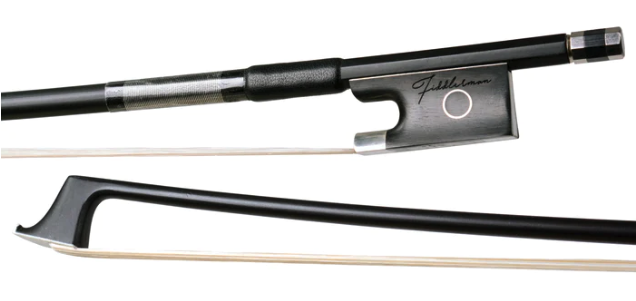
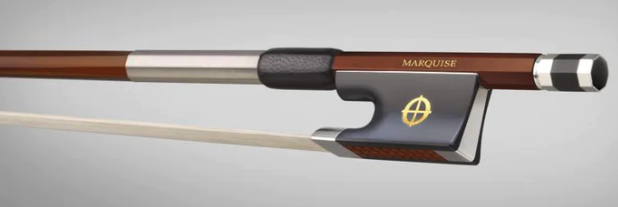

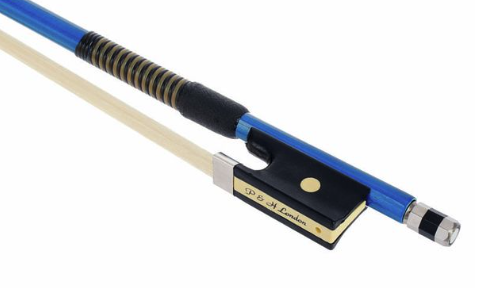
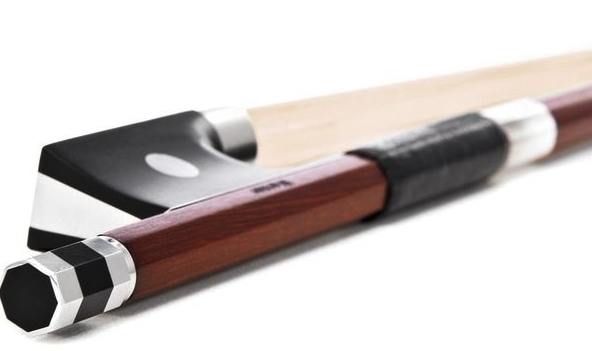
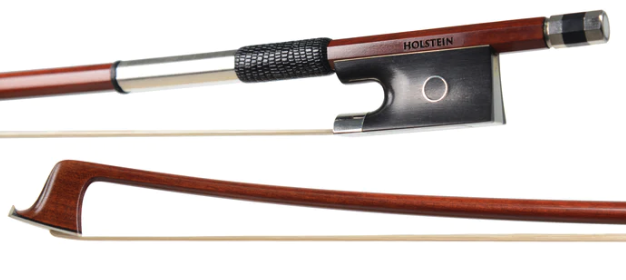
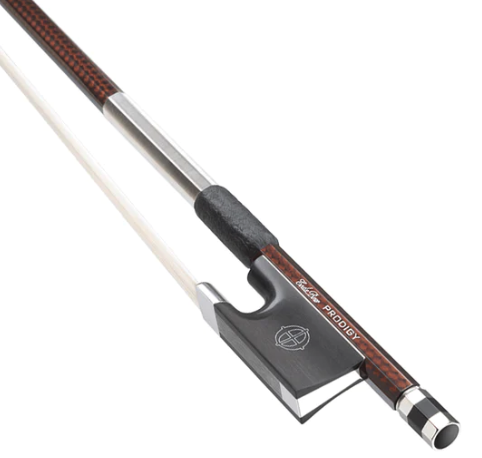
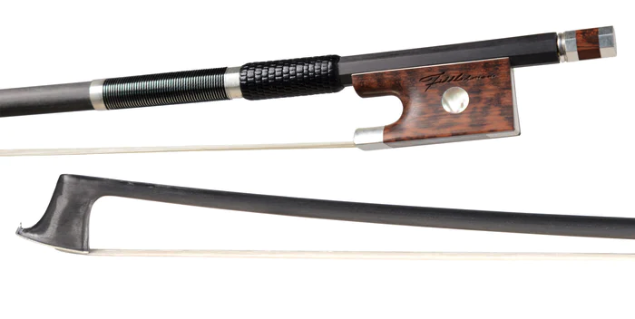
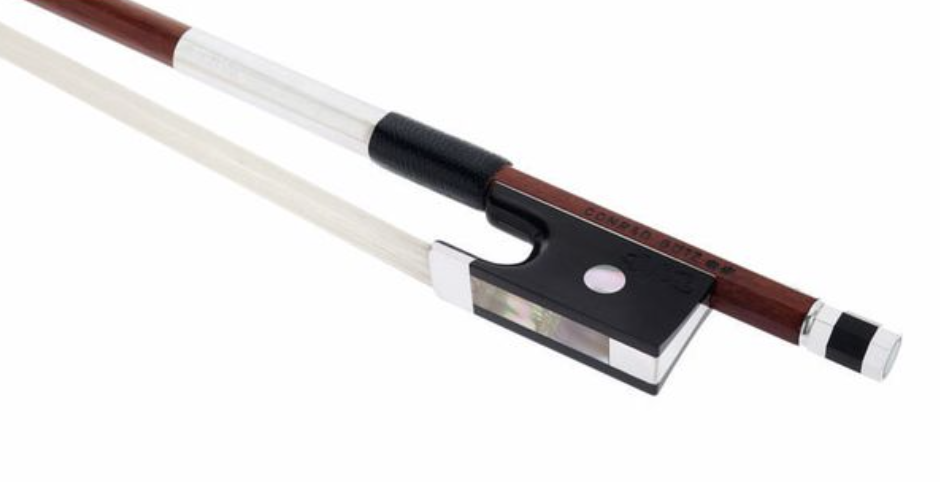

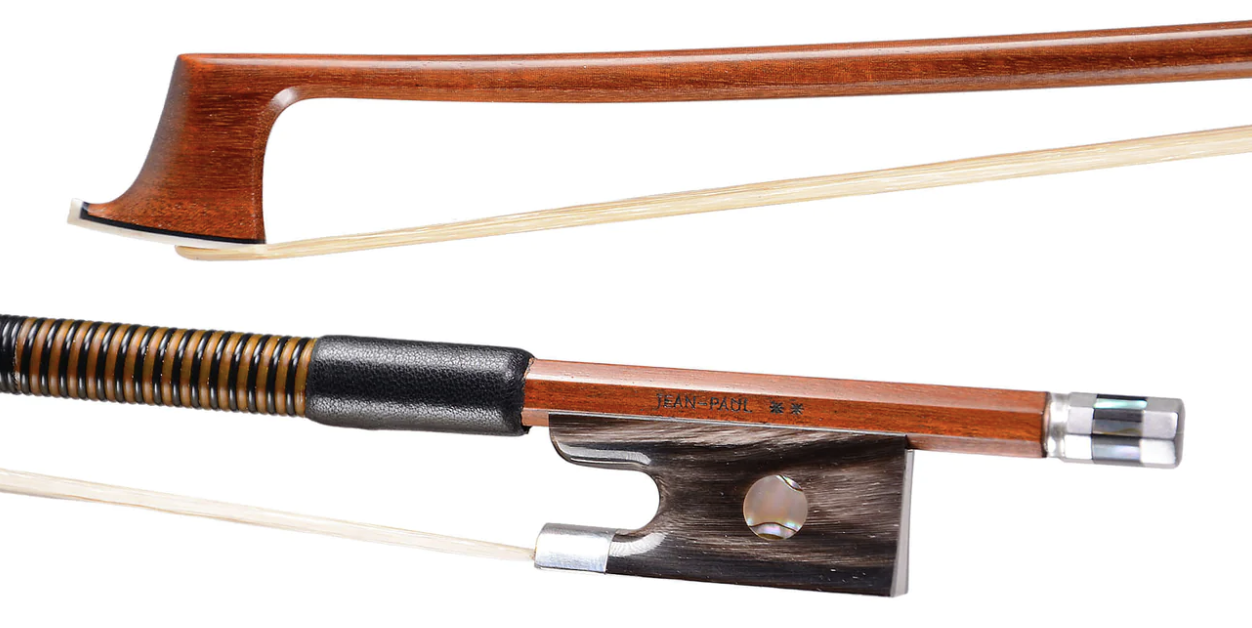
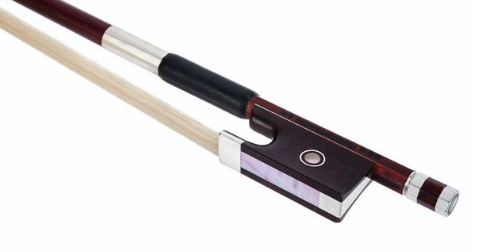
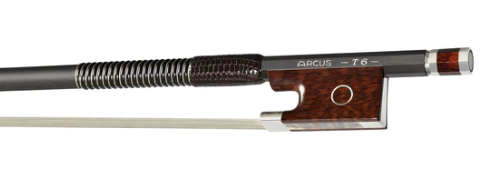
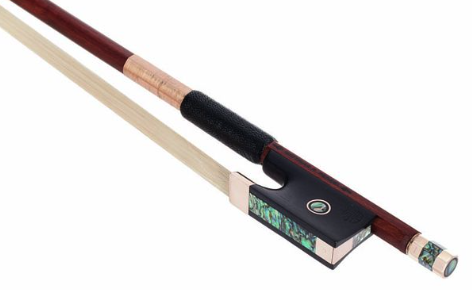
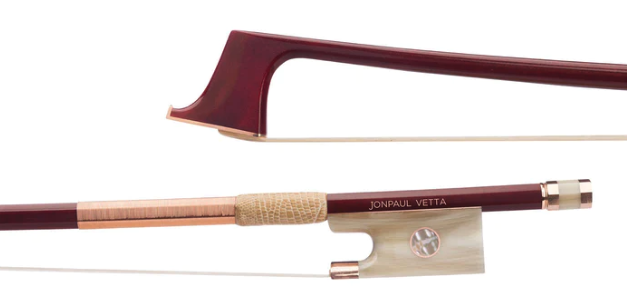
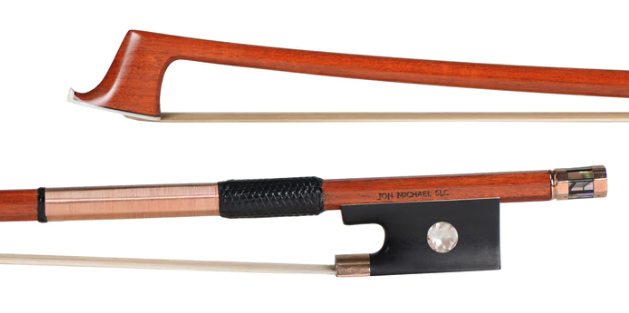
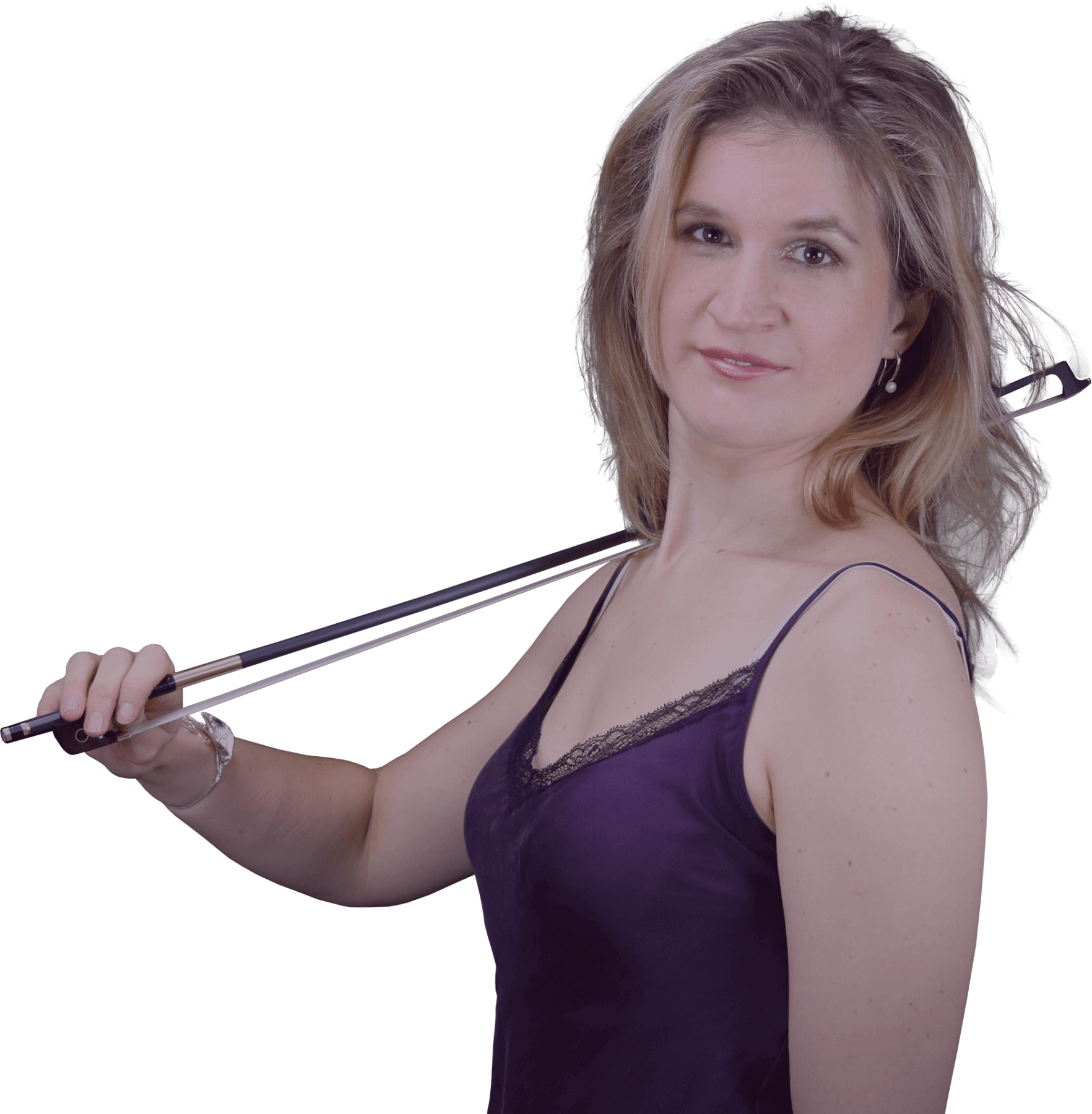
Hi Zlata!
I had a possibility test Musing C3 Carbon Fiber Violin Bow in Finland. It had nice and warm tone. I was a little suprised is this bow stiff enough? It was very easy to tighten the bow compared my “packet-in-bow”. What you think about C3 bow and do you see in same price range better alternatives for C3? I want a bow that will offer many years to come in my new violin path.
I’m a beginner level violin player and want to upgrade my cheap tree bow. I’d appreciate any feedback from the bow nerd.
The C3 is definitely stiff enough and will last you many years, so it’s a great option. If you want alternatives, check out the bows I list above and also watch the videos in my carbon fiber bow buying guide right here.
Hi Zlata I’ve juste discovered your YouTube channel and wow how helpful it is!
I have a ”study pernambuco we. Doerfler ” which has a Nice sound with my violin ( good student violin), titanium orchestra strings (definitely à good choice for this violin).
It lacks à bit of punchy sound on the G string especially on higher positions… of course I have to practice hard, but…. I Just sometimes get this feeling that I have to fight against my bow, when I do some fast passages, or staccato then legato that goes well with my supercheap carbonbow….
Would you think I could have benefit trying à codabow, like the diamond GX or the SX, or the musing c3?which one would you pick?
Thank you
Hi Nathalie, a stiffer bow could definitely give your playing more ‘punch’. It’s very personal what you would choose. I think my guide with bow reviews right here will give you more clarity. Personally I like the Müsings very much, but I also own a CodaBow Marquise that I like. What you can do is order three bow or so and try them out. They much also match your violin and your playing.
Merci Zlata!
Je pense aller vers un C3 qui est dans mes prix et chez un luthier que je connais
Je suis de niveau intermédiaire mais j’ai besoin d’un archet fiable qui me permettra d’explorer toutes les techniques d’archet!
Merci pour tes vidéos et c’est super mignon quand on entend tes enfants c’est cute
Merci cela me rassure d’avoir un avis professionnel
I just recently got the Holstein 2 Pernambuco bow, upgraded from the Fiddlerman Carbon Fiber. I love the warm sound and feel of the Holstein, it was well worth the investment. I still like the carbon fiber for its bright sound but I noticed the pernambuco is more steady and isn’t as jumpy. Both sound good for different reasons on my Fiddlerman Soloist. Very happy with the combo 🙂
Wonderful, thanks for sharing!
Bonjour Zlata, j’ai acquis un muesing c3 . Juste pour te faire un retour qu’il est vraiment super et précis, bonne réponse, rien à voir avec mon doerfler. Il est plus puissant aussi, j’arrive à faire plus de nuances. Notes rapides plus faciles, plus propres. Moins d’accrochages des autres cordes.
À moi maintenant de pratiquer!
Merci Zlata pour les vidéos et toutes les explications!
Wow, I love to read that you found such a good match!
As someone looking to upgrade my bow, this guide is invaluable. The pros and cons of each option are clearly laid out, and the tips on what to look for when buying a bow are spot on.
Glad it’s helpful 🙂